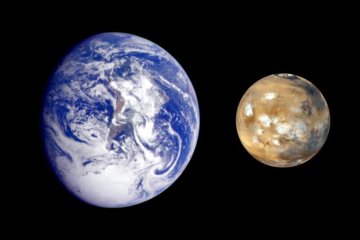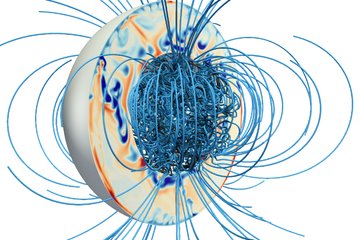All genres
1.
Journal Article
Three-dimensional analyses of an aspherical coronal mass ejection and its driven shock. Astronomy and Astrophysics 660, p. A23 (2022)
2.
Journal Article
Radial Flow Pattern of a Slow Coronal Mass Ejection. Astrophysical Journal 805 (2), 113 (2015)
3.
Journal Article
Why Does the Apparent Mass of a Coronal Mass Ejection Increase? Astrophysical Journal 812 (1), 70 (2015)
4.
Journal Article
Multiwavelength Observations of a Partially Eruptive Filament on 2011 September 8. Astrophysical Journal 805, 4, pp. 1 - 18 (2015)
5.
Journal Article
Well‐observed Dynamics of Flaring and Peripheral Coronal Magnetic Loops during an M‐class Limb Flare. Astrophysical Journal 791, 83 (2014)
6.
Journal Article
2D and 3D Polar Plume Analysis from the Three Vantage Positions of STEREO/EUVI A, B, and SOHO/EIT. Solar Physics 283, pp. 207 - 225 (2013)
7.
Journal Article
Kelvin-Helmholtz Instability of a Coronal Streamer. Astrophysical Journal 774, pp. 141 - 150 (2013)
8.
Journal Article
Comparisons of CME Morphological Characteristics Derived from Five 3D Reconstruction Methods. Solar Physics 282 (1), pp. 221 - 238 (2013)
9.
Journal Article
Magnetic Energy Partition between the Coronal Mass Ejection and Flare from AR 11283. Astrophysical Journal 765, 37 (2013)
10.
Journal Article
Particle kinetic analysis of a polar jet from SECCHI COR data. Astronomy and Astrophysics 538, A34 (2012)
11.
Journal Article
Morphological Evolution of a Three-Dimensional Coronal Mass Ejection Cloud Reconstructed from Three Viewpoints. Astrophysical Journal 751 (1), 18 (2012)
12.
Journal Article
Morphology, dynamics and plasma parameters of plumes and inter-plume regions in solar coronal holes. Astron. Astrophys. Rev. 19, 35 (2011)
13.
Journal Article
Stereoscopic polar plume reconstructions from STEREO/SECCHI images. Astrophysical Journal 700, pp. 292 - 301 (2009)
14.
Journal Article
Solar stereoscopy where are we and what developments do we require to progress? Annales Geophysicae 27, pp. 2925 - 2936 (2009)
15.
Journal Article
Multi-spacecraft observations of polar coronal plumes. Astronomy and Astrophysics 481, pp. L61 - L64 (2008)
16.
Journal Article
A first step in reconstructing the solar corona self-consistently with a magnetohydrostatic model during solar activity minimum. Astronomy and Astrophysics 481, pp. 827 - 834 (2008)
17.
Journal Article
First stereoscopic coronal loop reconstructions from STEREO/SECCHI images. Astrophysical Journal 671, pp. L205 - L208 (2007)
18.
Journal Article
Magnetic Stereoscopy of Coronal Loops in NOAA 8891. Solar Physics 241, pp. 235 - 249 (2007)
19.
Journal Article
Segmentation of Loops from Coronal EUV Images. Solar Physics 248, pp. 379 - 393 (2007)
20.
Journal Article
An impulsive heating model for the evolution of coronal loops. Chin. J. Astron. Astrophys. 6 (5), pp. 608 - 616 (2006)











